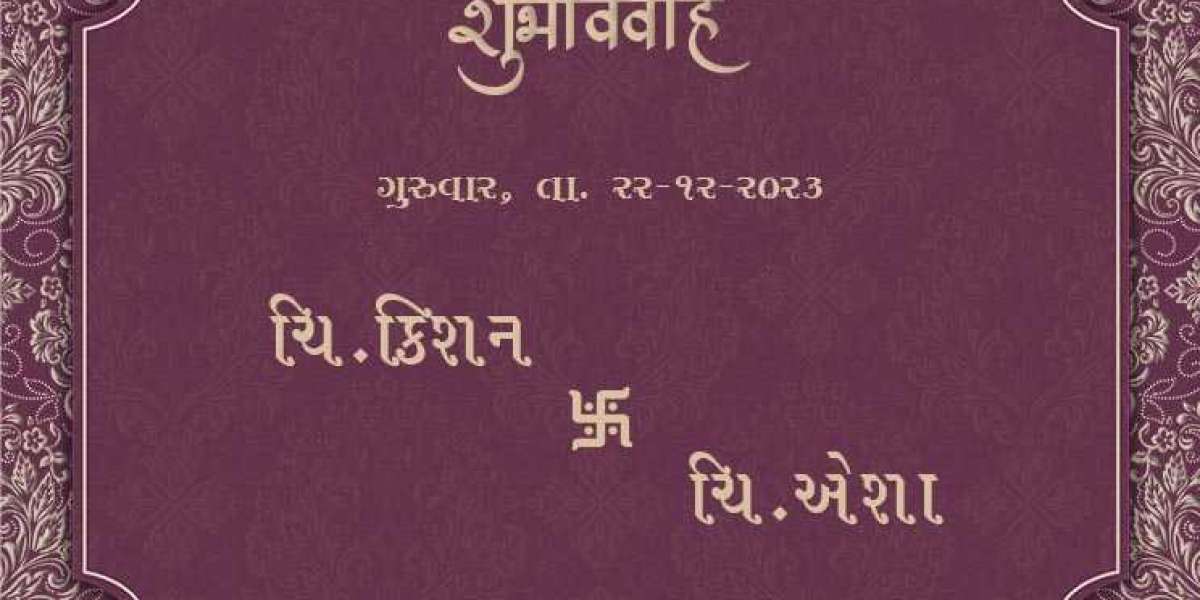Introduction
Creating a Tahuko for Kankotri involves carefully blending tradition with modern wedding planning to ensure every aspect of the celebration reflects the cultural richness of Gujarati customs. This guide will help you navigate through the process of designing a comprehensive template that serves as a roadmap for planning a seamless and memorable Gujarati wedding. From selecting the perfect Kankotri design to organizing traditional ceremonies and choosing attire, this introduction will lay the foundation for building a detailed, culturally authentic, and personalized wedding template. Whether you are planning a grand celebration or an intimate gathering, understanding how to create a Gujarati wedding template will ensure that every detail, from rituals to decor, aligns with the vibrant traditions and values of Gujarati culture.
Tips to creating effective Gujarati wedding template
Creating an effective Kankotri Template Gujarati requires a blend of traditional aesthetics, cultural elements, and personal touches. Here are some tips to help you craft a beautiful and meaningful wedding invitation:
1. Incorporate Traditional Motifs
- Use traditional Gujarati motifs such as peacocks, elephants, paisleys, and mandalas. These designs not only enhance the visual appeal but also carry cultural significance, symbolizing prosperity, joy, and auspiciousness.
2. Choose the Right Color Palette
- Opt for vibrant and auspicious colors like red, gold, green, and maroon, which are deeply rooted in Gujarati culture. These colors convey warmth, celebration, and tradition.
3. Highlight Gujarati Script
- Incorporate Gujarati script to include traditional blessings, verses, or the couple’s names. This adds an authentic touch and honors the linguistic heritage of the community.
4. Personalize the Content
- Add personalized elements such as the couple’s story, a meaningful quote, or a custom illustration. This makes the Kankotri more personal and memorable for guests.
5. Balance Tradition and Modernity
- While maintaining traditional elements, consider incorporating modern design techniques like laser-cut patterns, foil stamping, or minimalist layouts. This creates a fresh, contemporary look that still respects tradition.
6. Use High-Quality Materials
- Select premium-quality paper or card stock to give your Kankotri a luxurious feel. You can also consider using eco-friendly materials to reflect a commitment to sustainability.
7. Keep the Layout Elegant and Organized
- Ensure the invitation text is clear, concise, and well-organized. Avoid overcrowding the design with too much information; instead, focus on the key details and keep the layout clean.
8. Include Essential Details
- Make sure all the essential information—such as the date, time, venue, and dress code—is prominently displayed. Double-check for accuracy to avoid any confusion.
9. Add a Personal Touch
- Consider including a small insert with a personal note or a traditional sweet or token, such as a packet of kumkum (vermilion powder), to make the invitation more special.
10. Coordinate with the Wedding Theme
- Ensure that the Kankotri design aligns with the overall theme of the wedding. This creates a cohesive experience for guests, from the invitation to the event itself.
Conclusion
Kankotri Gujarati Wedding Card serves as an essential blueprint for planning a wedding that is both culturally authentic and flawlessly organized. By incorporating every aspect of the celebration—from the design of the Gujarati Wedding Kankotri to the intricate rituals and vibrant decor—the template ensures that the wedding reflects the rich traditions of Gujarati culture while accommodating modern touches. It simplifies the planning process, offering clear guidance on each detail, from attire and cuisine to guest management and post-wedding rituals. Ultimately, a well-crafted Gujarati wedding template helps create a cohesive, meaningful, and joyous celebration that honors the couple's heritage while providing an unforgettable experience for all involved.











